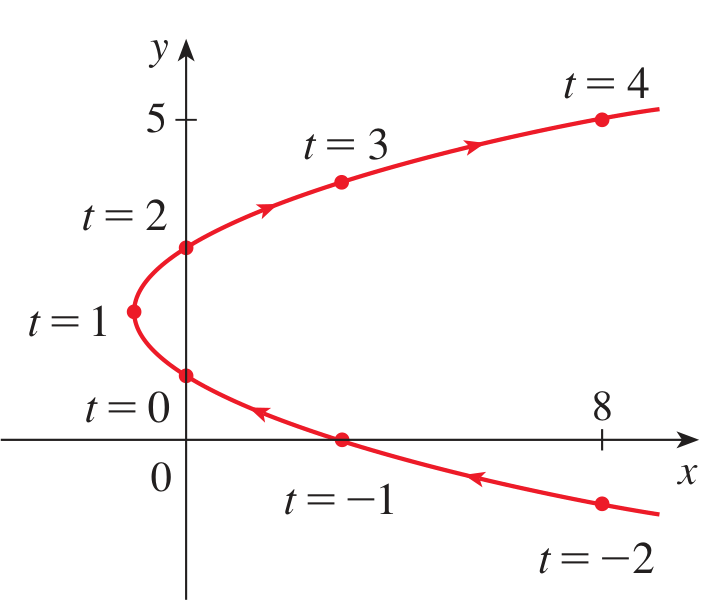Theory 1
Parametric curves are curves traced by the path of a ‘moving’ point. An independent parameter, such as
Parametric curve
A parametric curve is a function from parameter space
to the plane given in terms of coordinate functions:
Other notations
Be aware that sometimes the coordinate functions are written with
and (or yet other letters) like this: Or simply equating coordinate letters with functions:
Sometimes a different parameter is used, like
or .
For example, suppose:
The curve traced out is a parabola that opens horizontally:

Given a parametric curve, we can create an equation satisfied by
In the example:
This is the equation of a parabola centered at
Image of a parametric curve
The image of a parametric curve is the set of output points
that are traversed by the moving point.
A parametric curve has hidden information that isn’t contained in the image:
- The time values
when the moving point is found in various locations. - The speed at which the curve is traversed.
- The direction in which the curve is traversed.
We can reparametrize a parametric curve to use a different parameter or different coordinate functions while leaving the image unchanged.
In the previous example, shift
Since the parameter